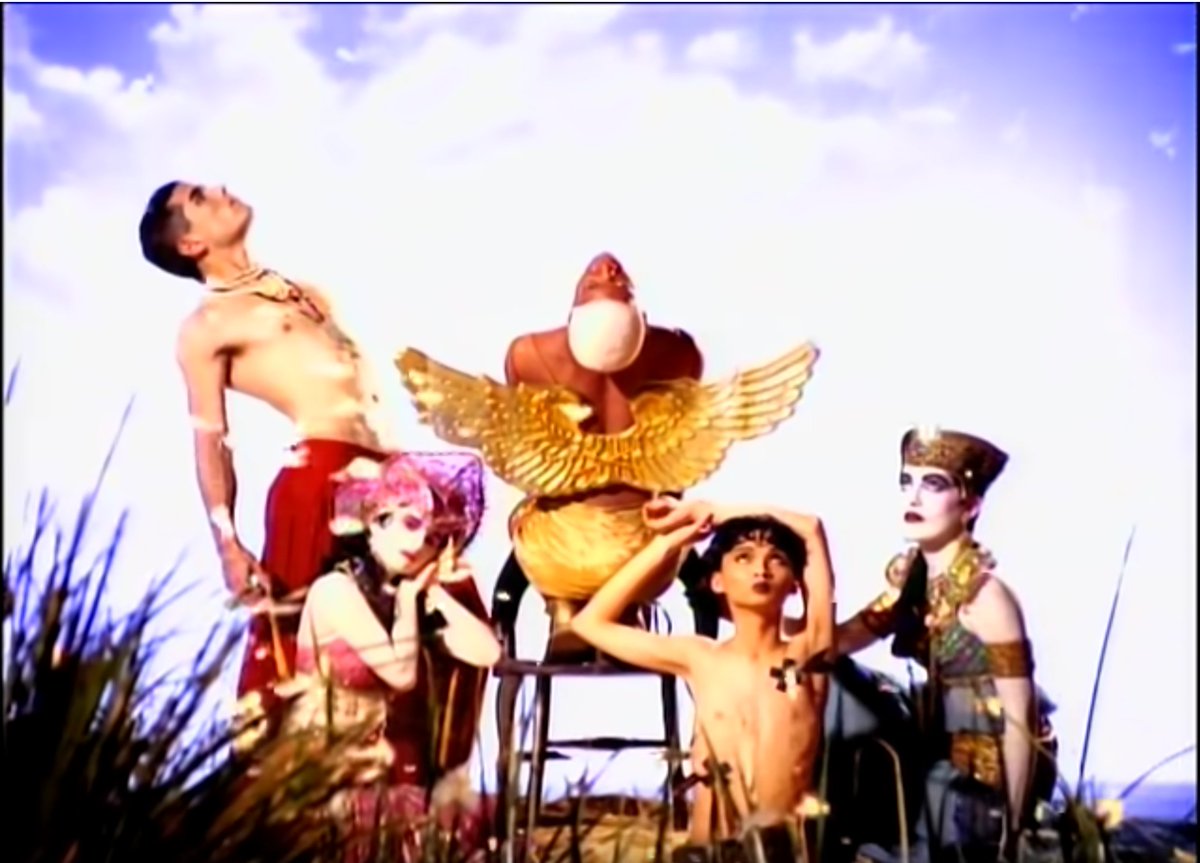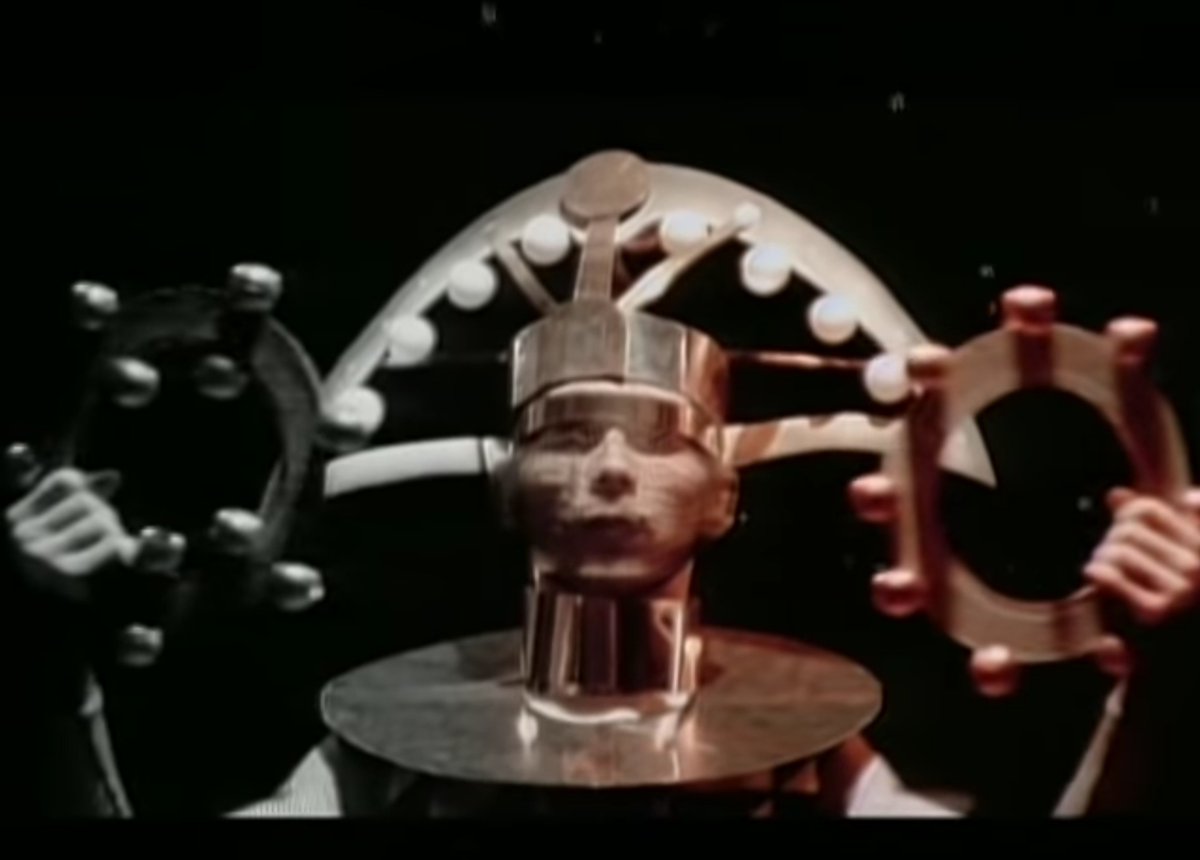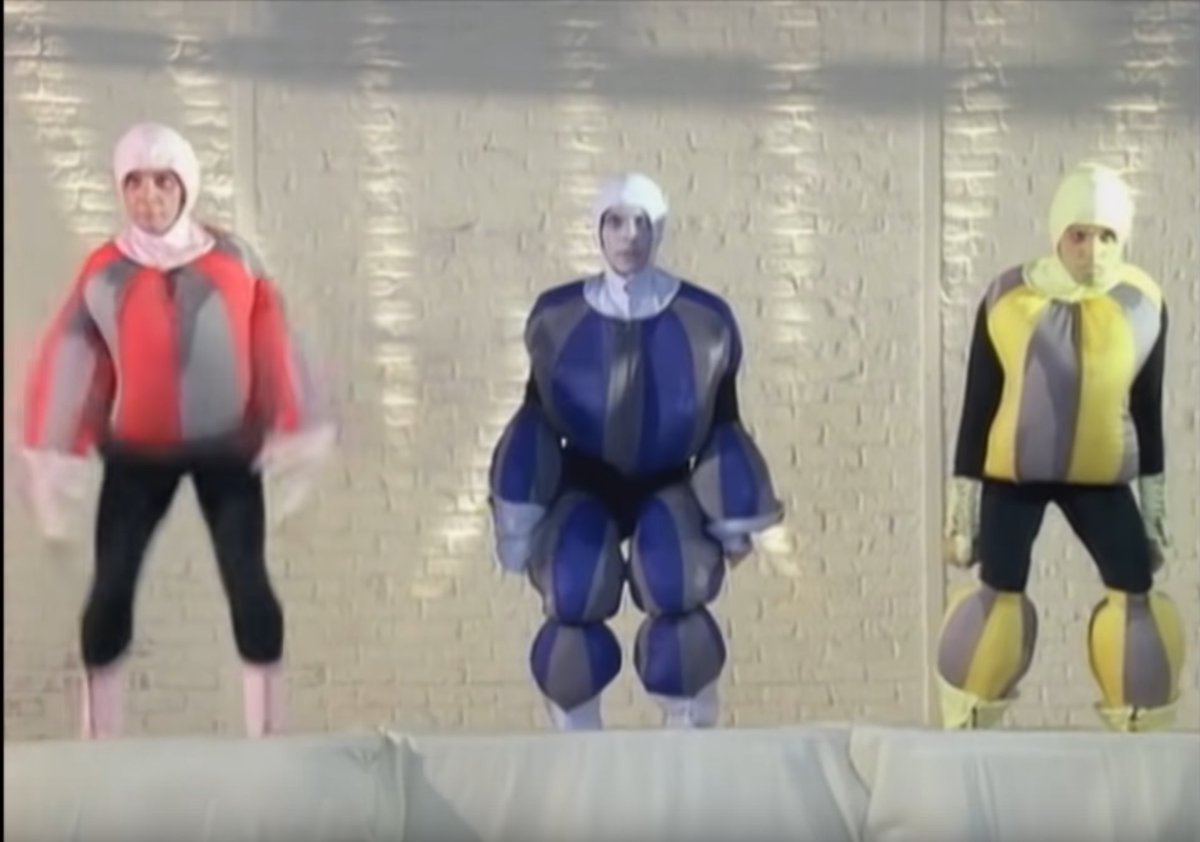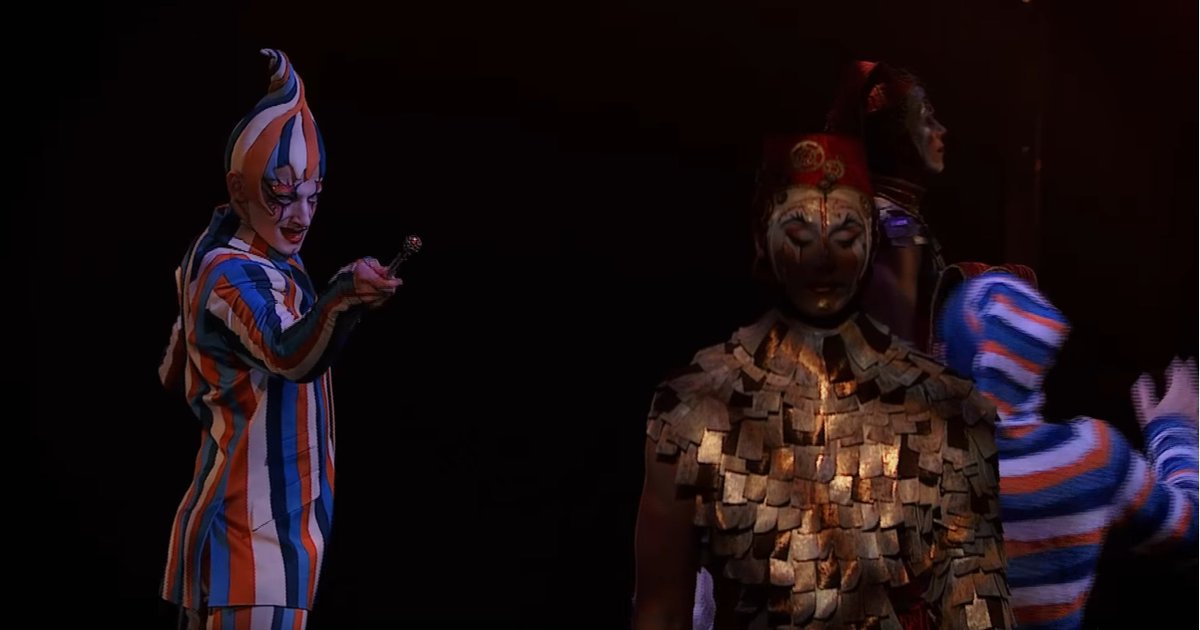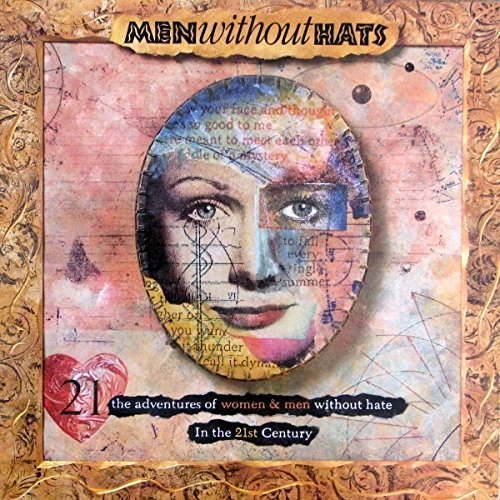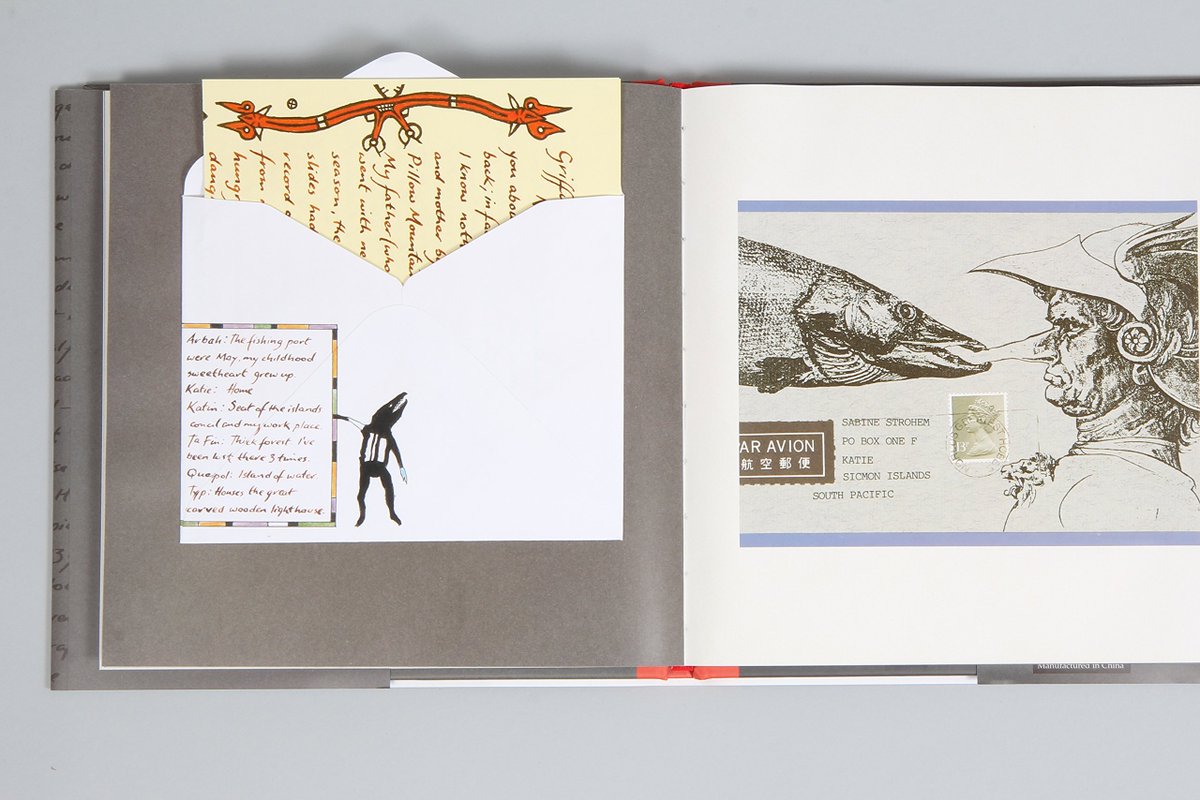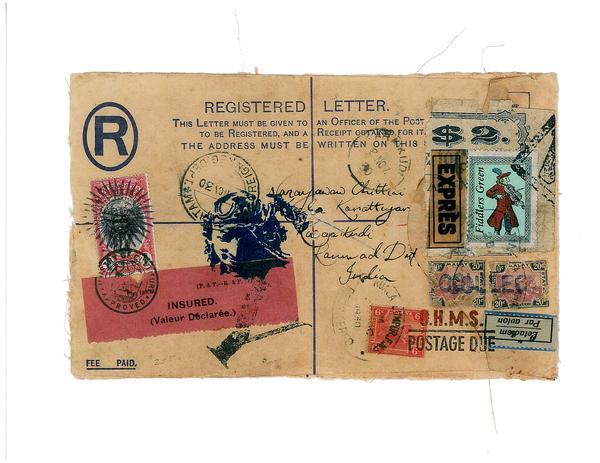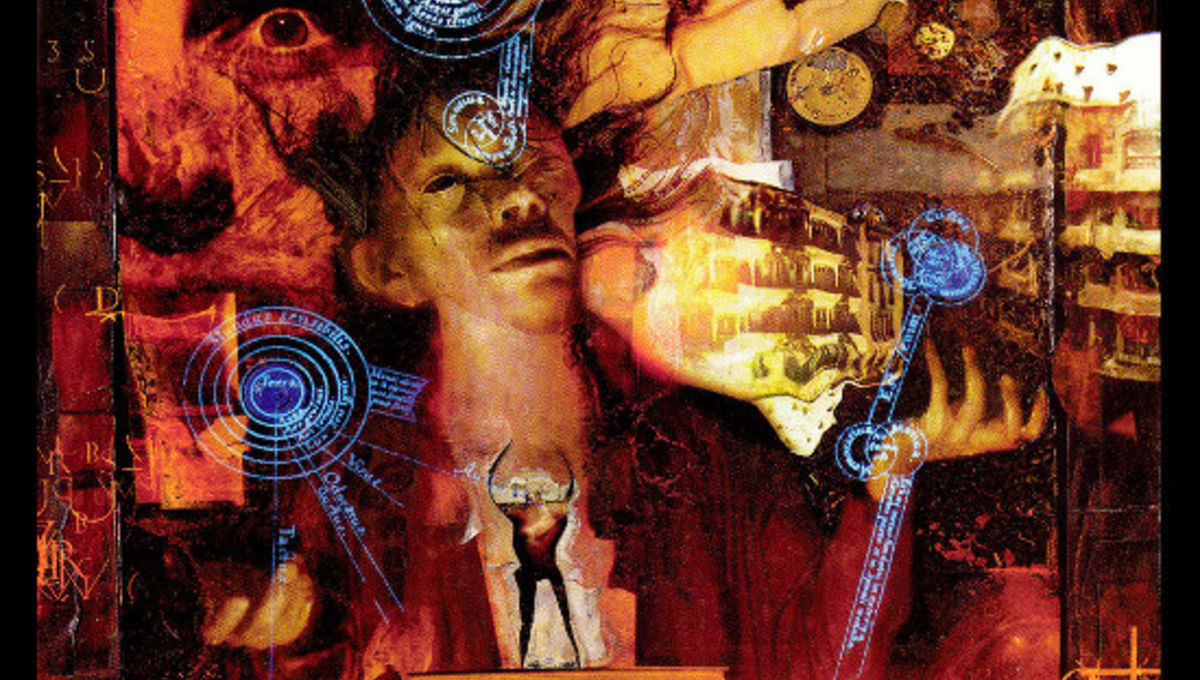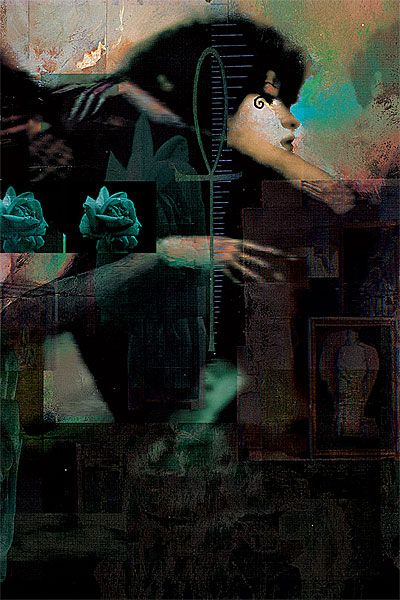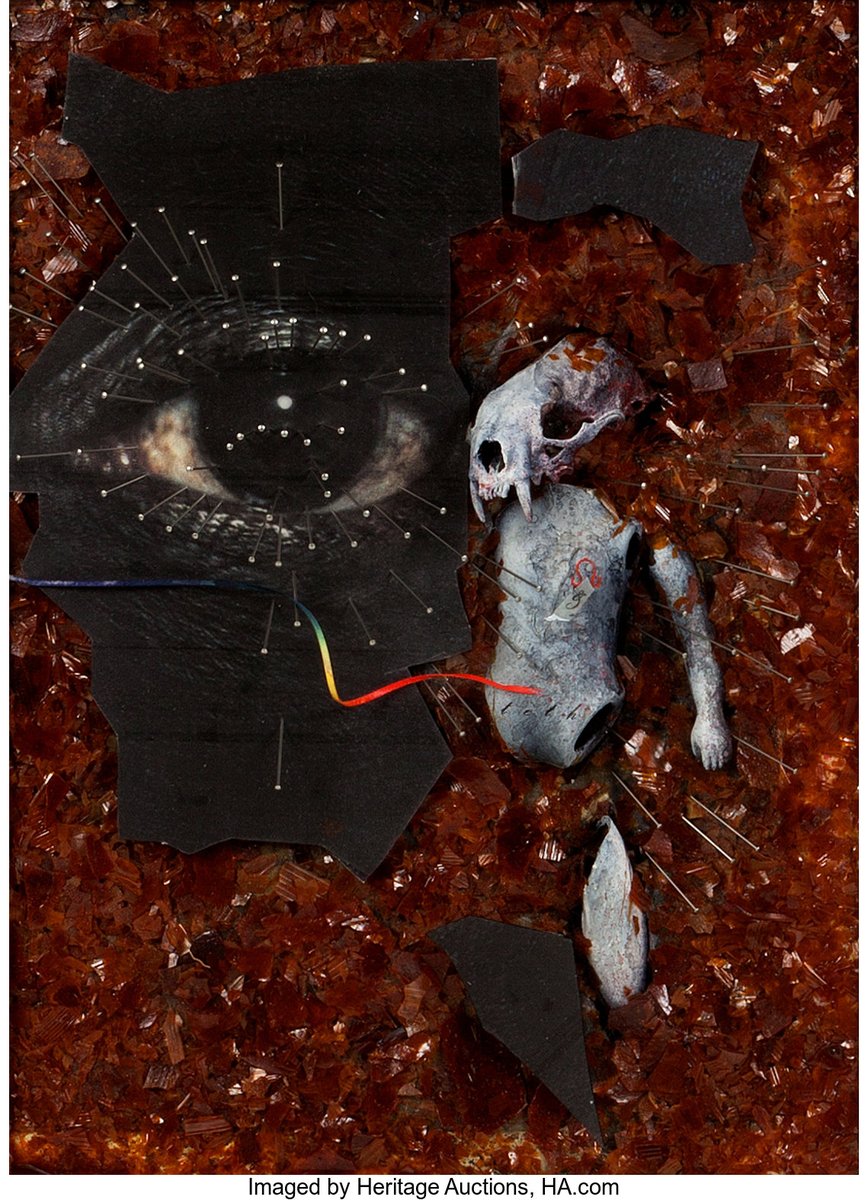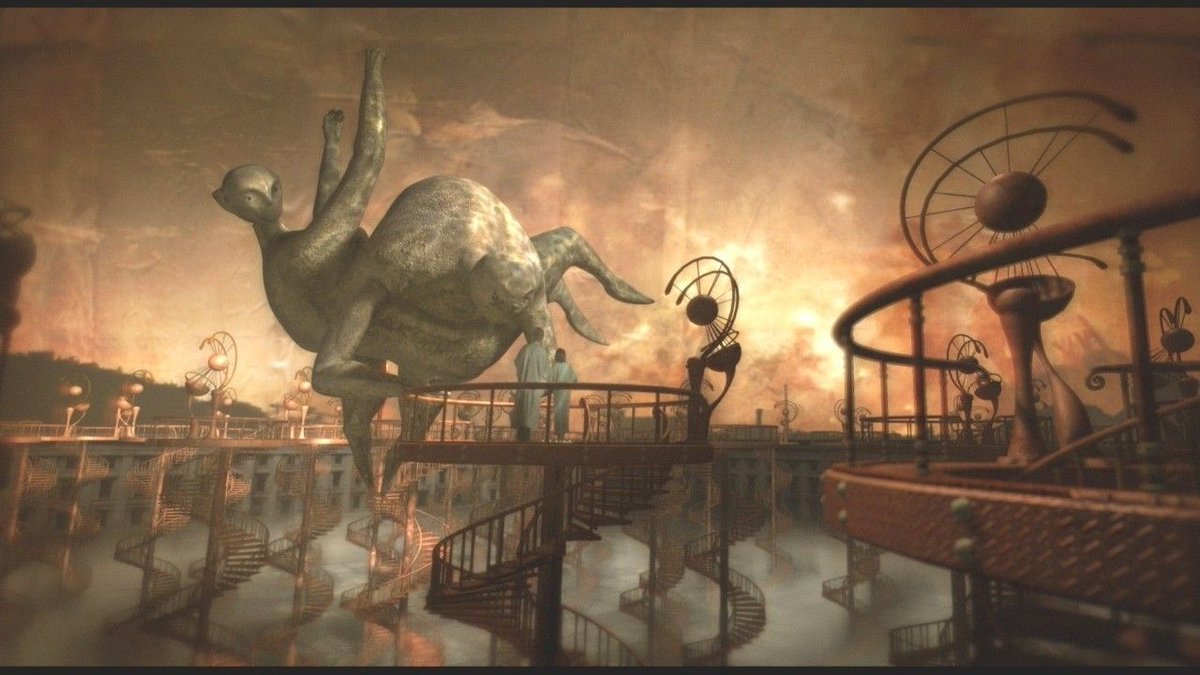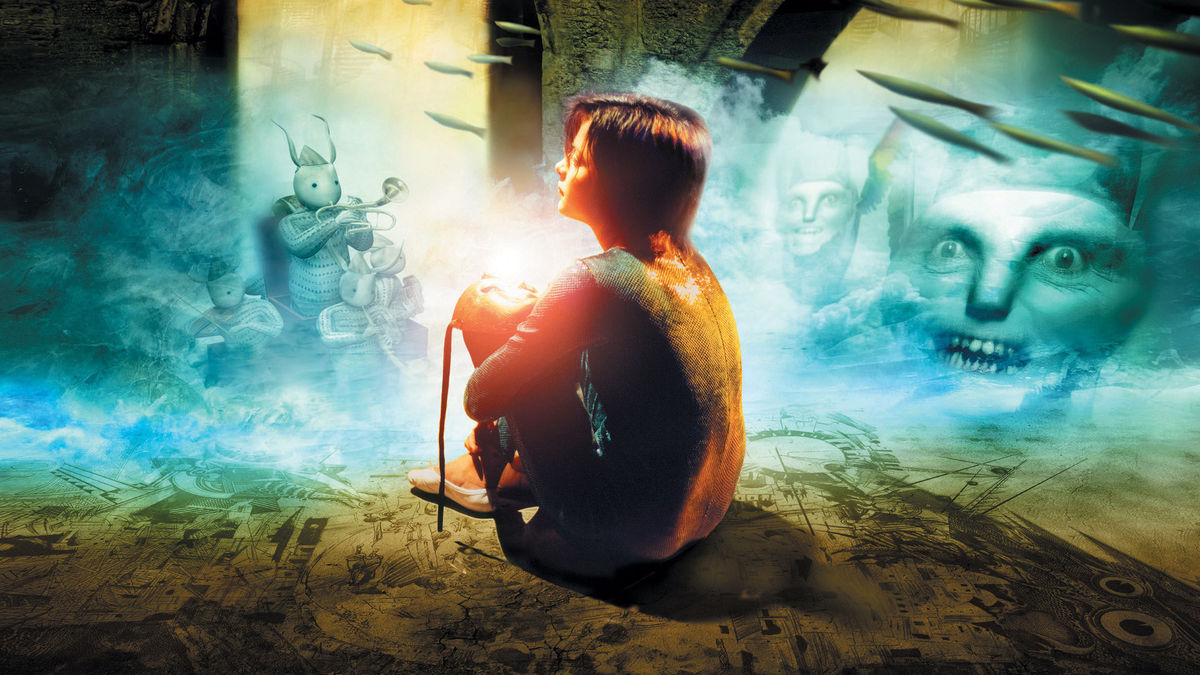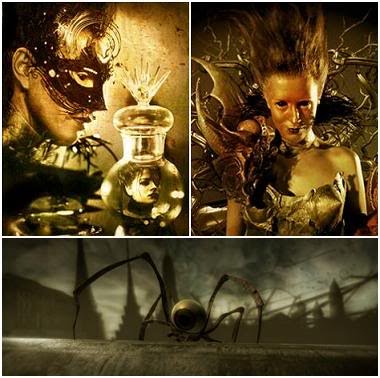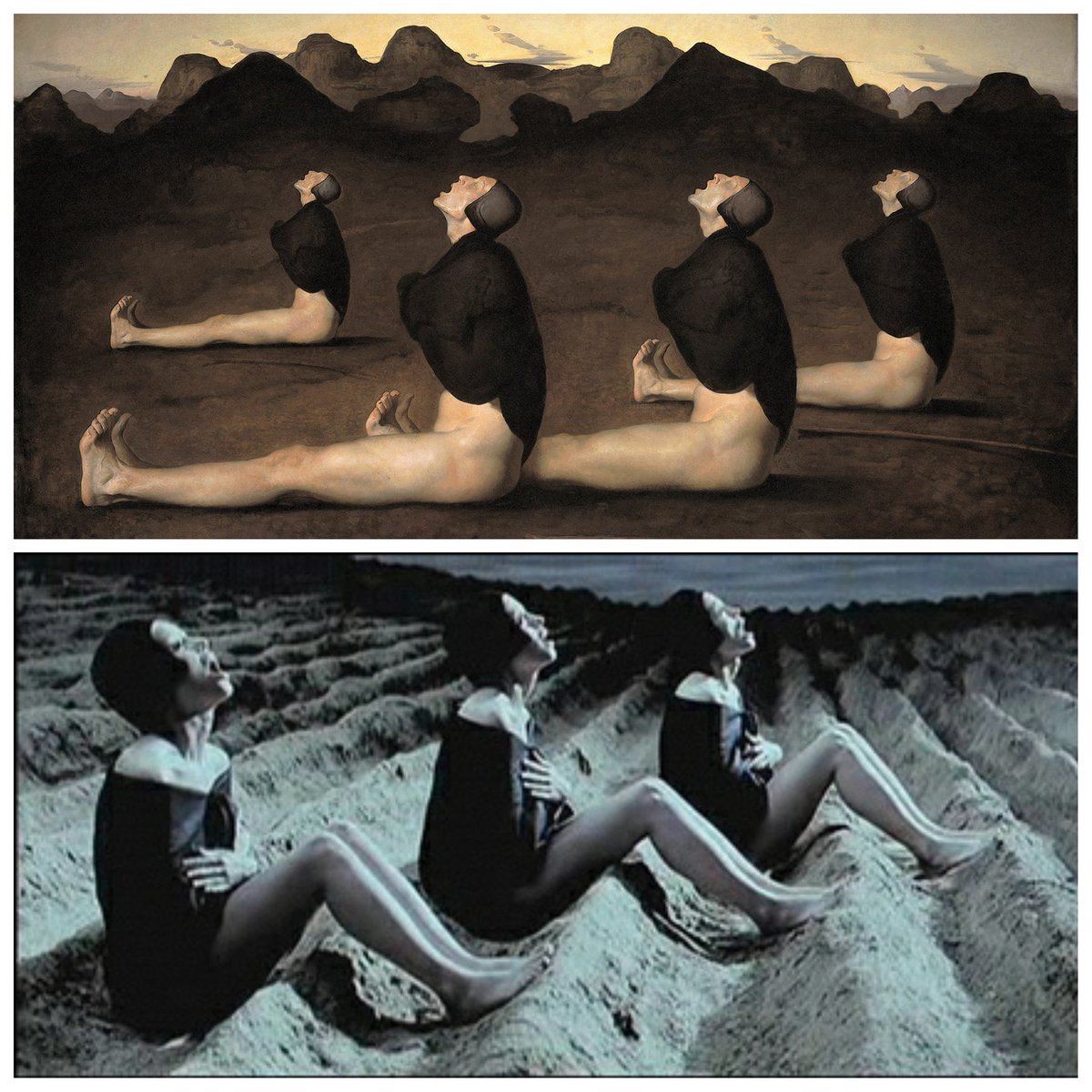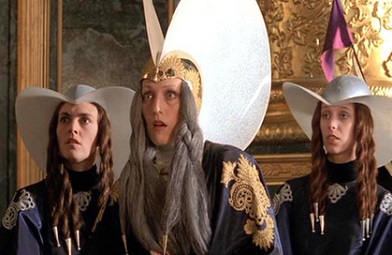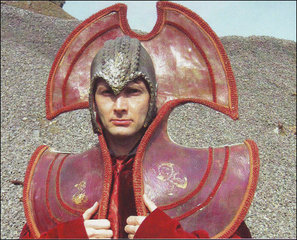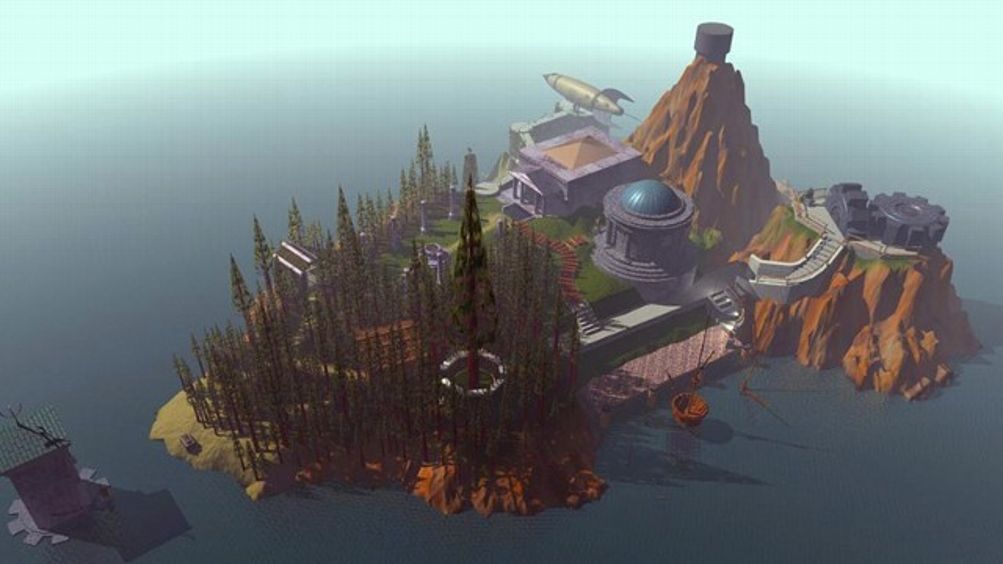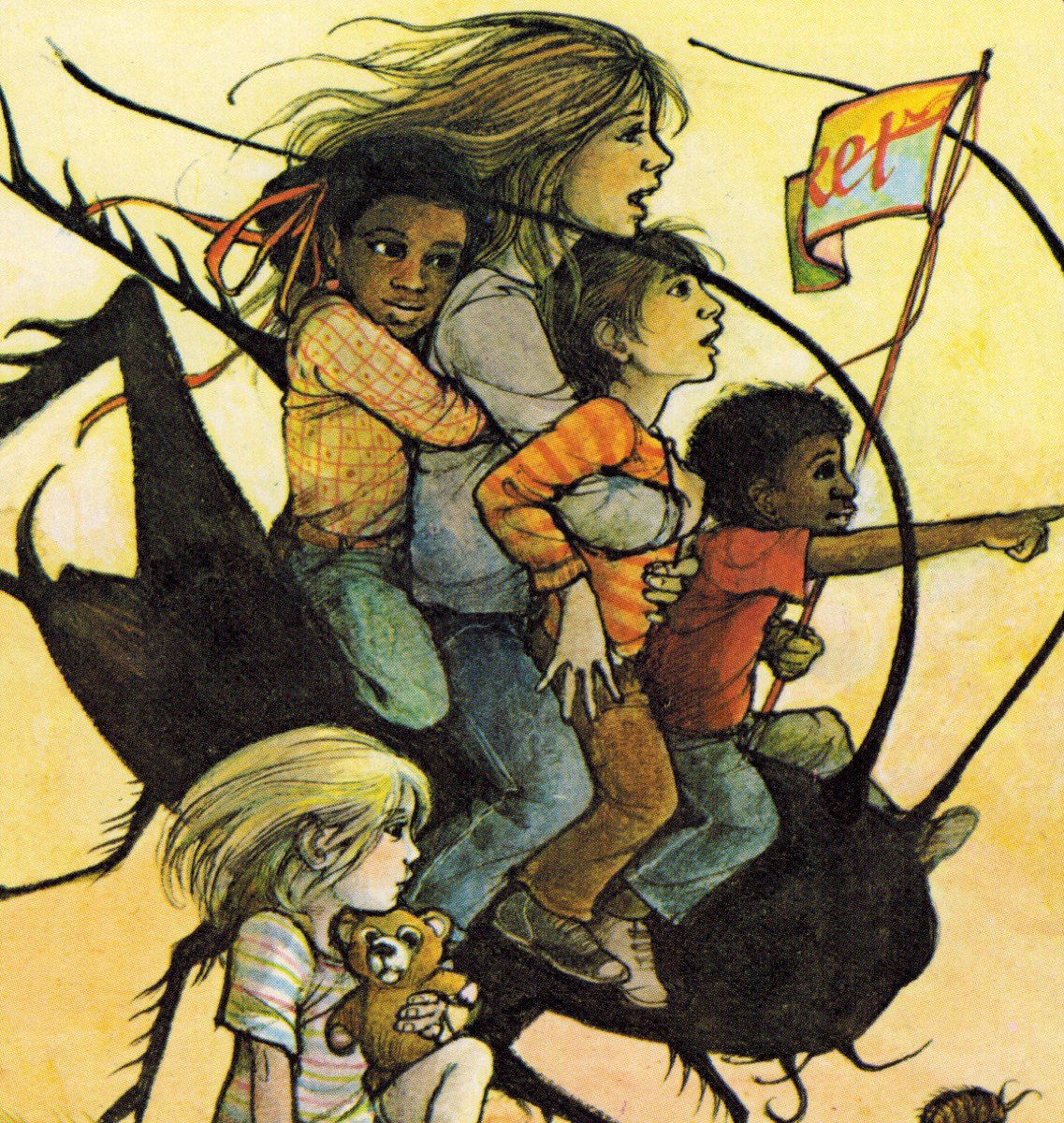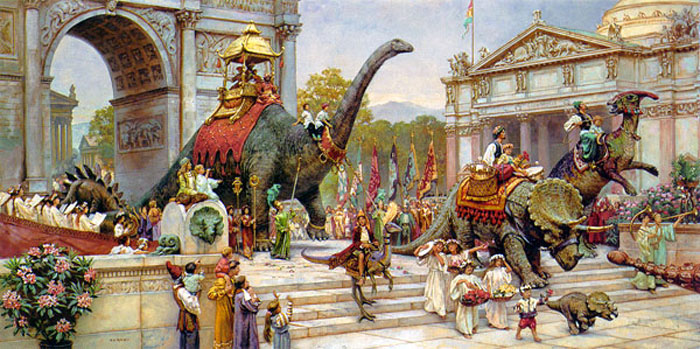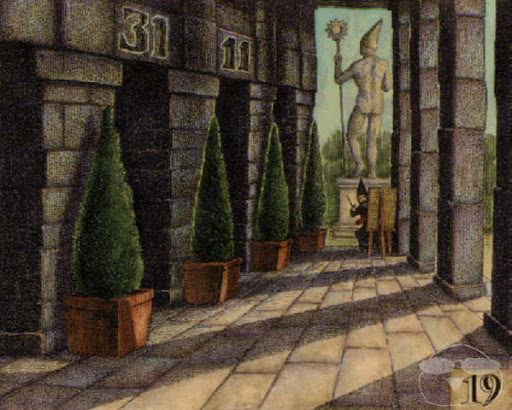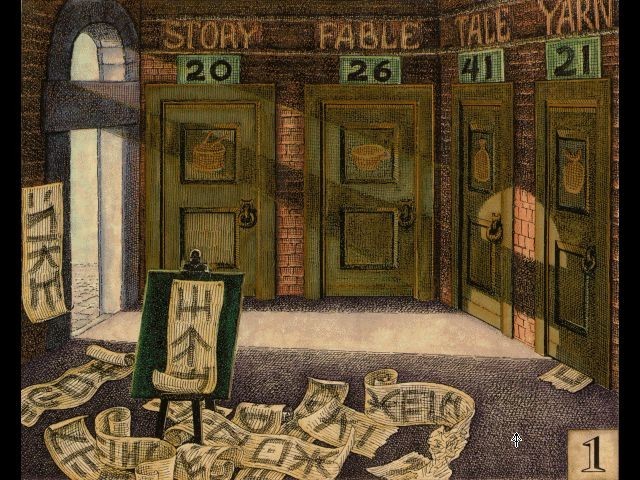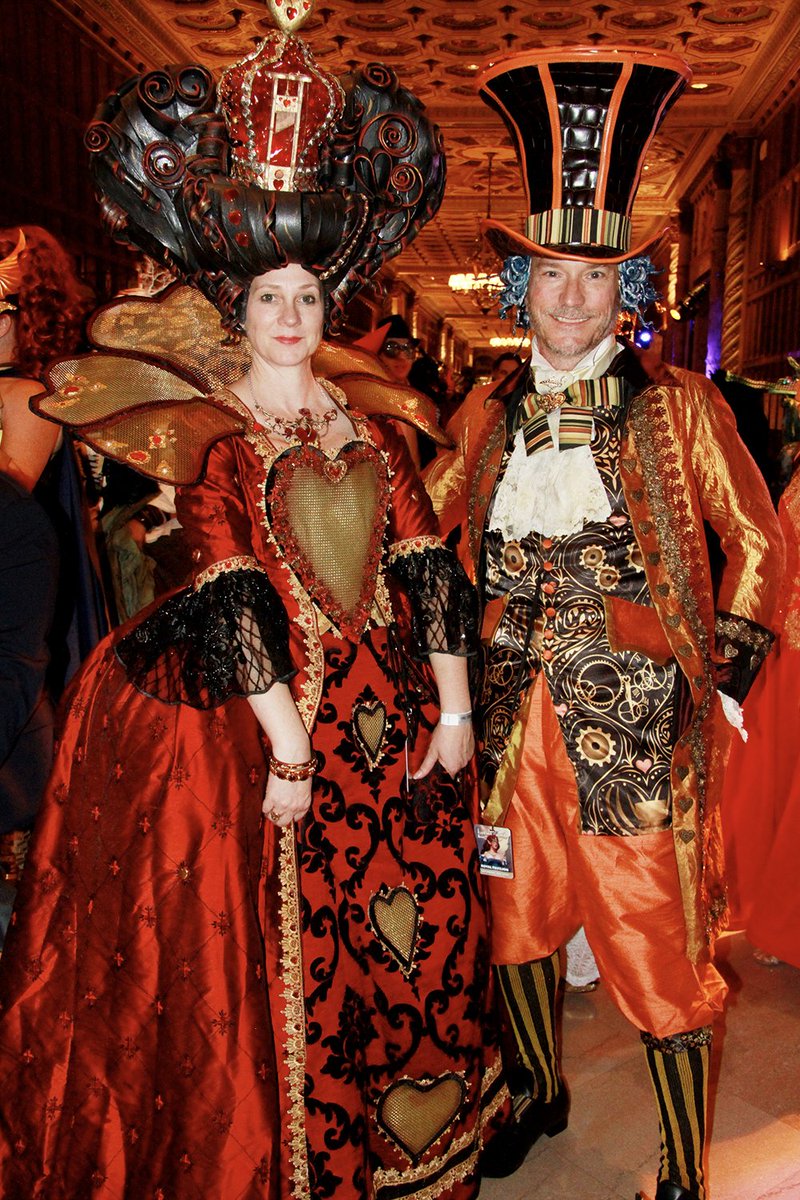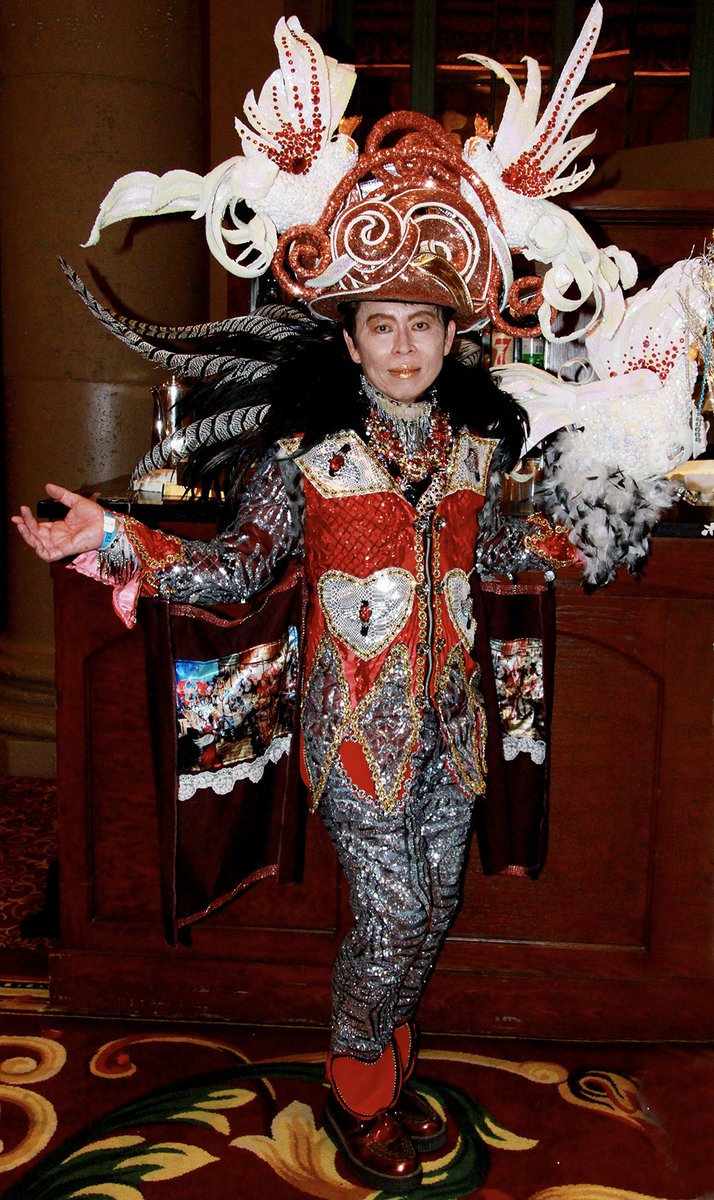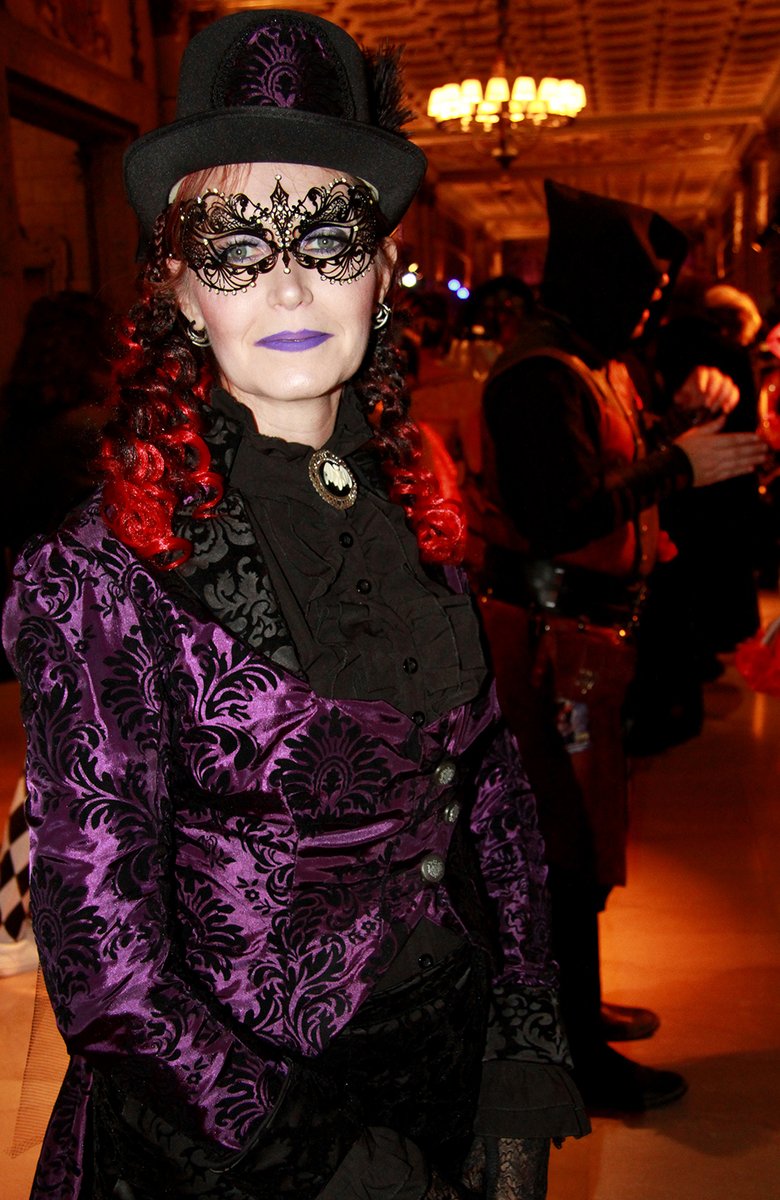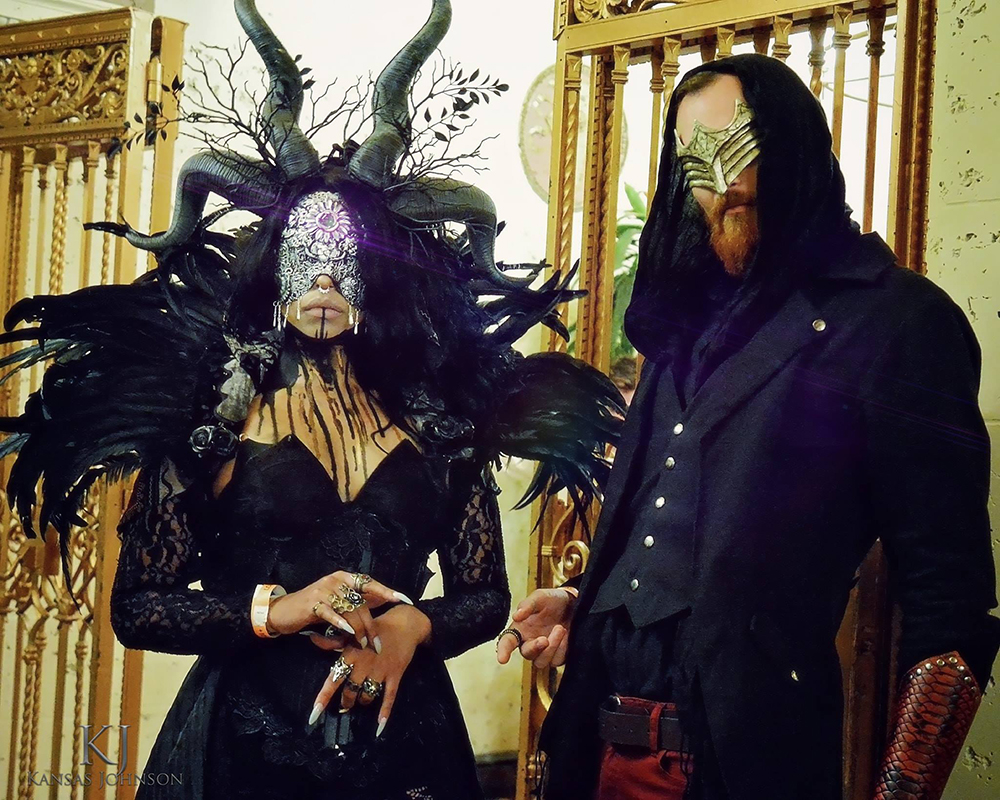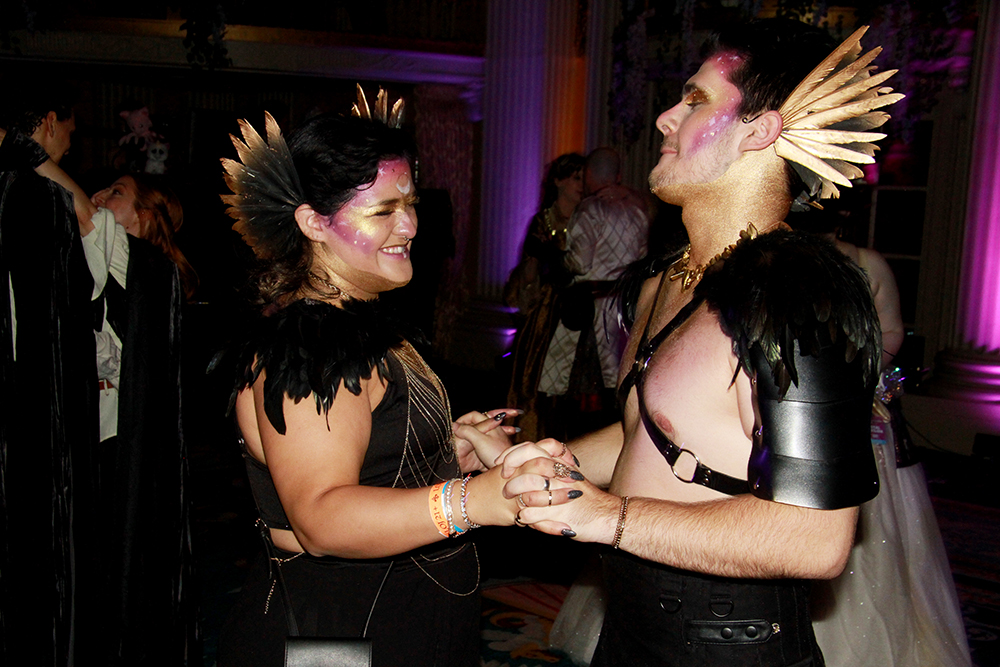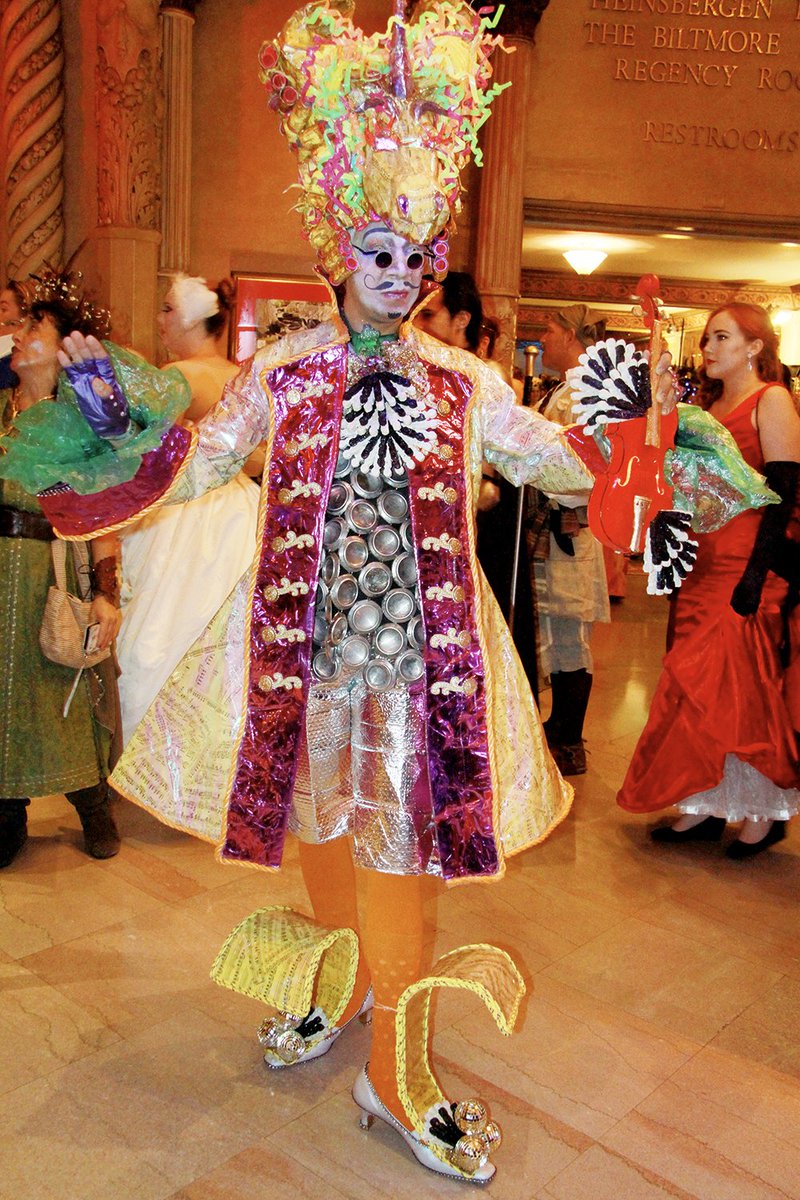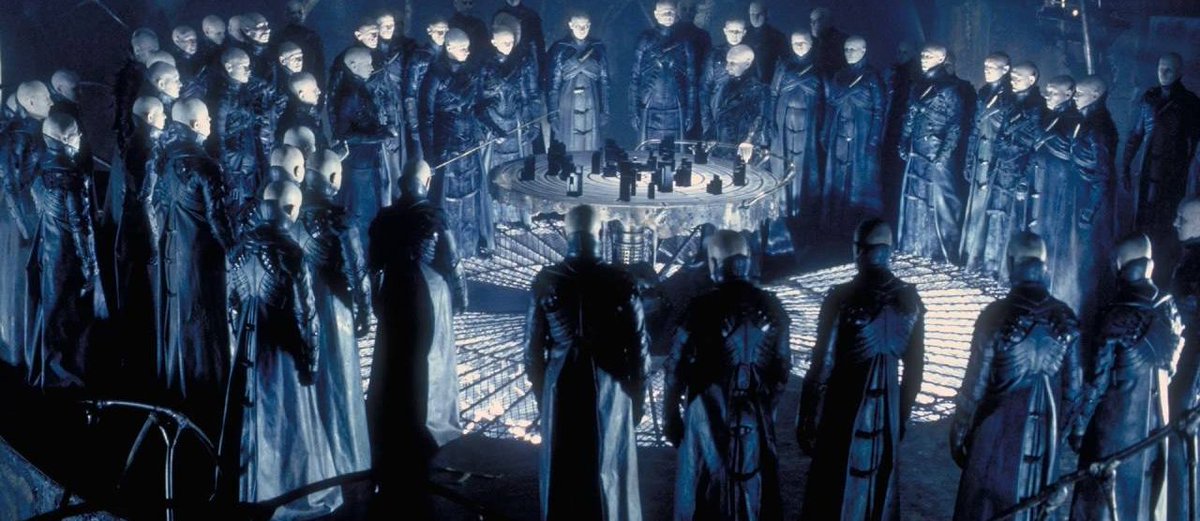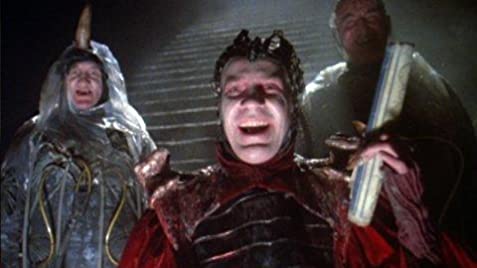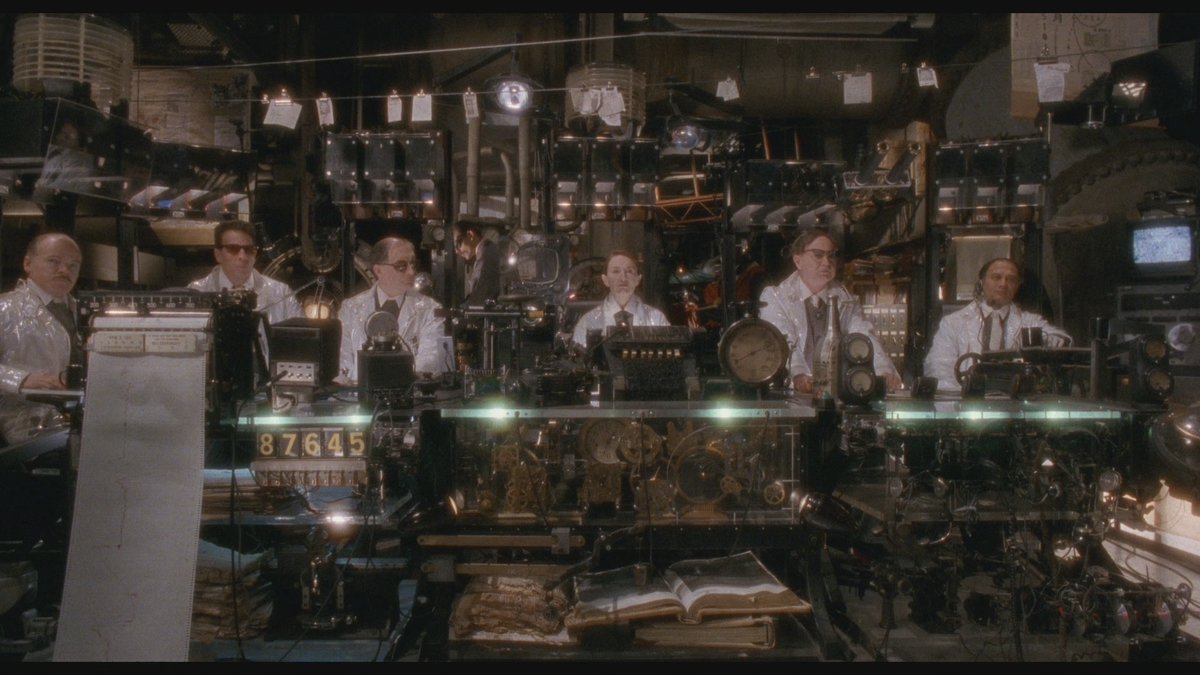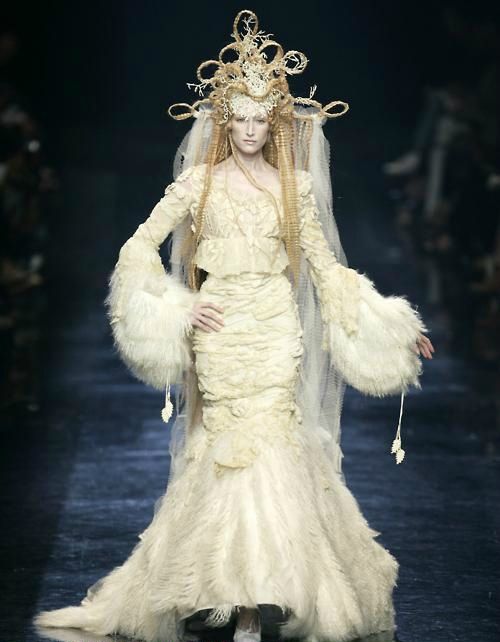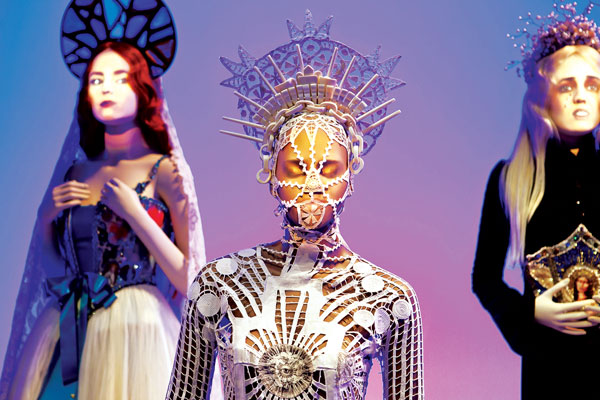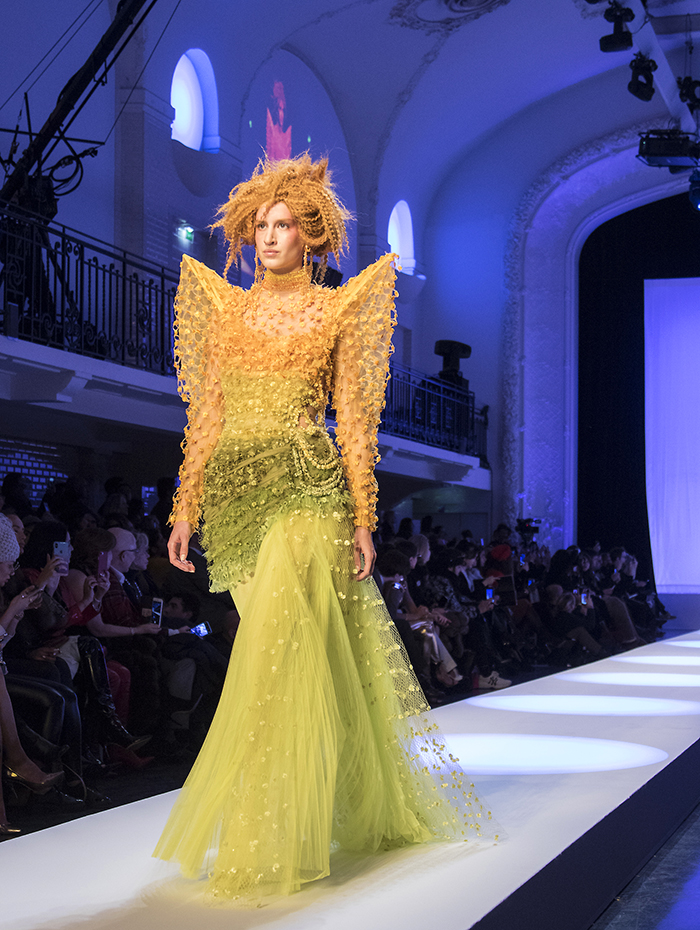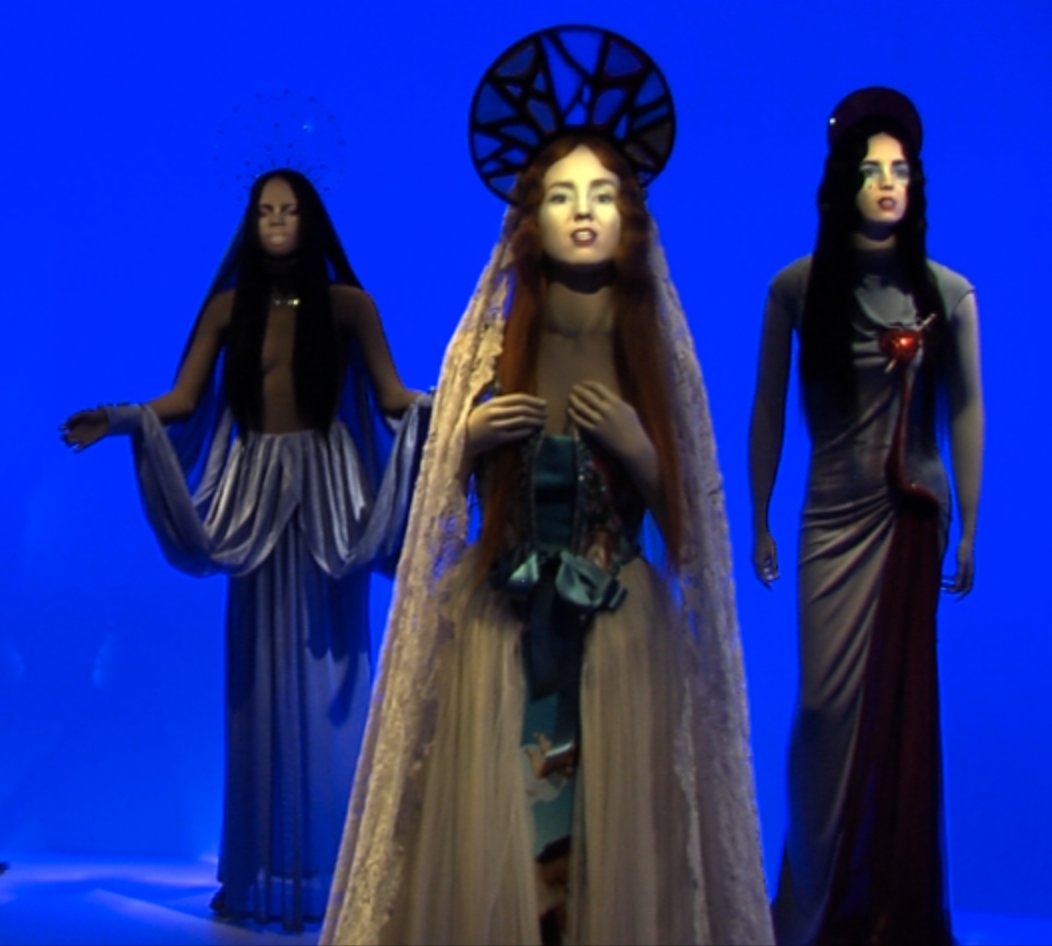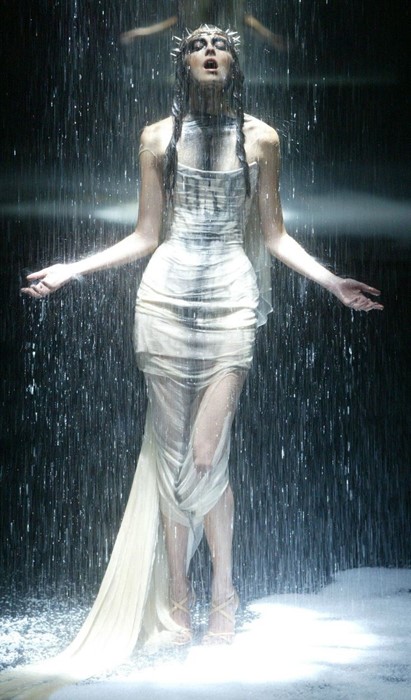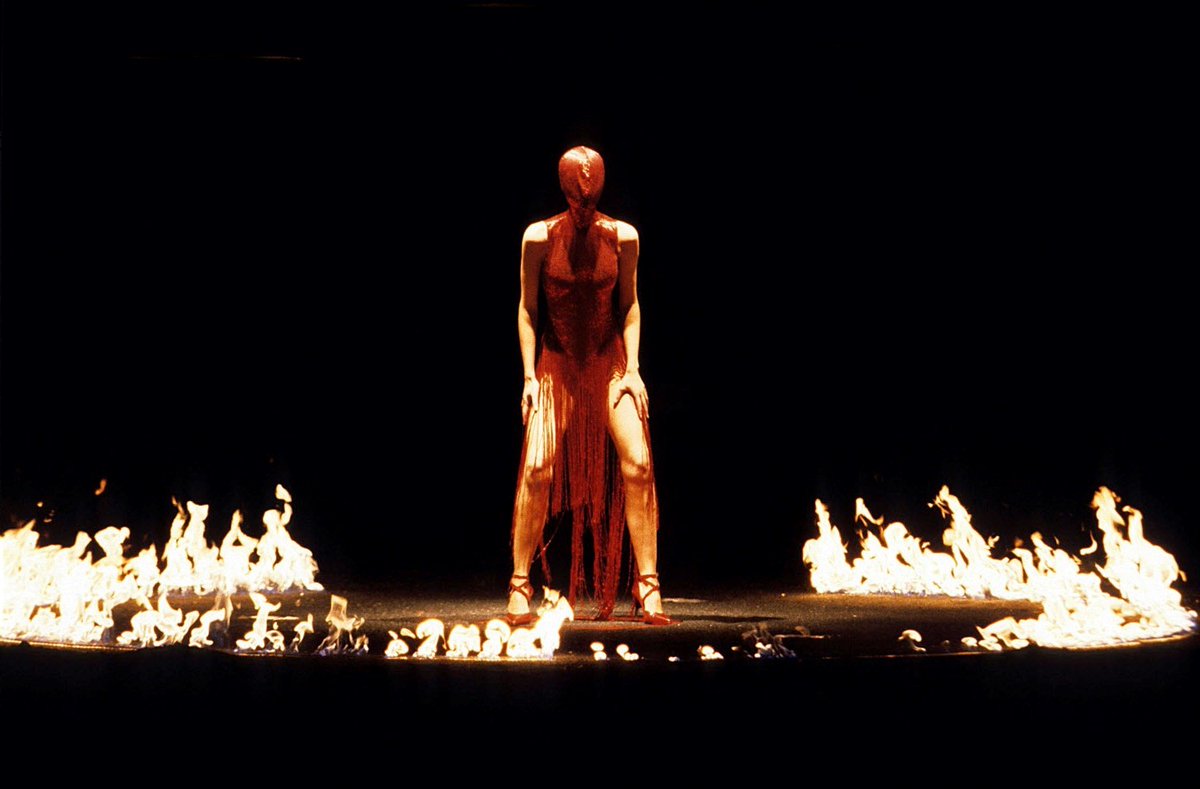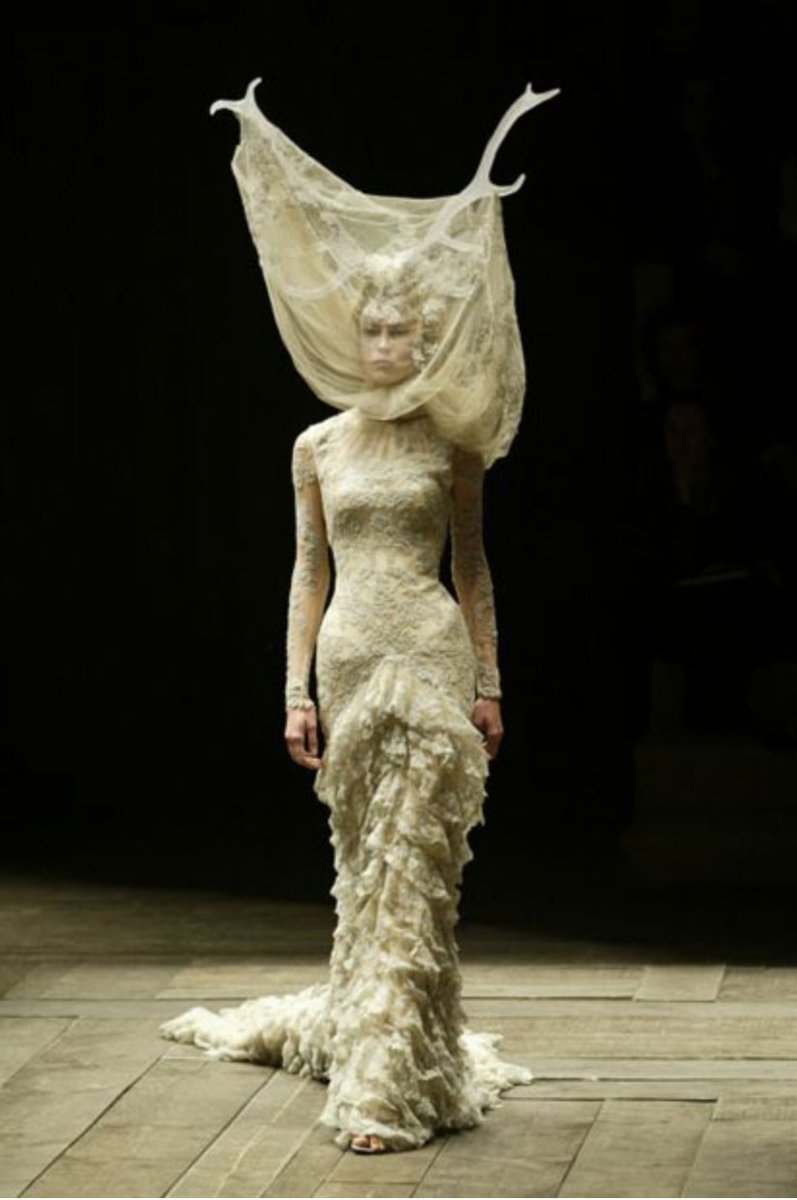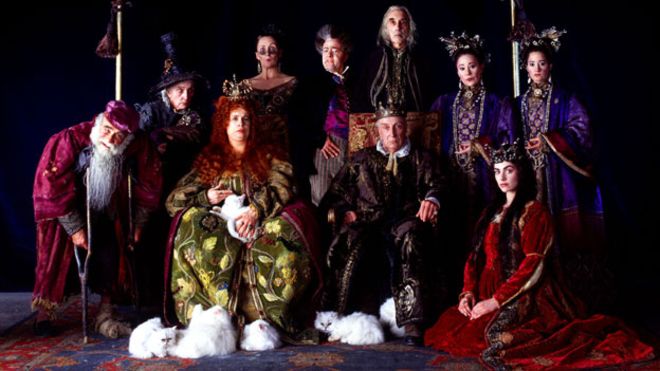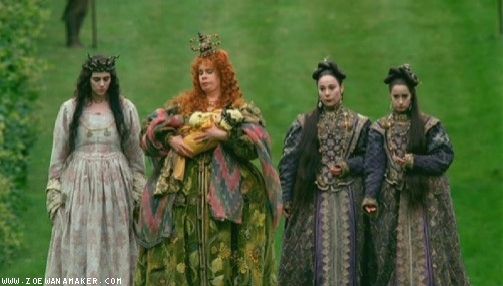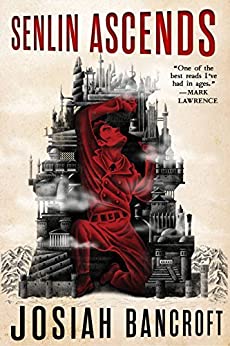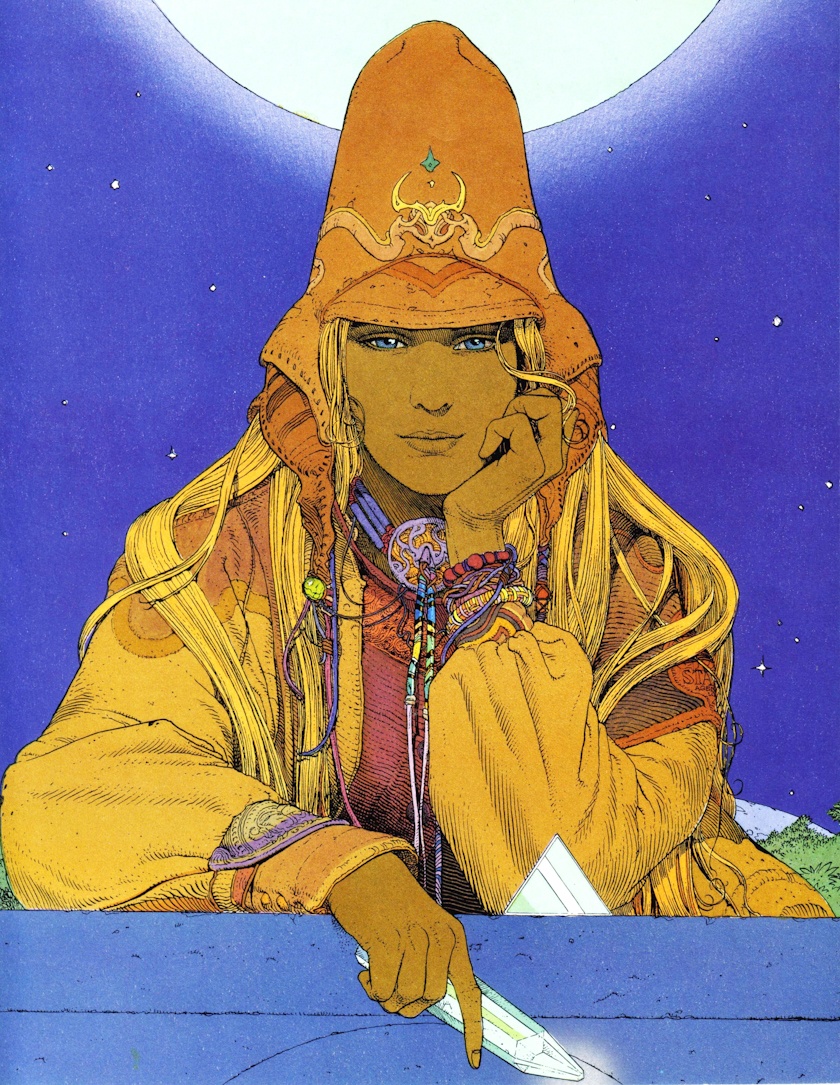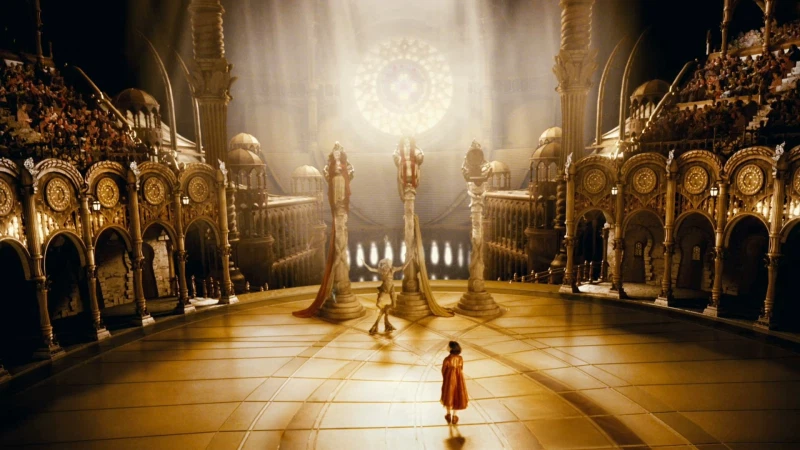THREAD: When we talk about "the 80s look" today we usually mean early 80s (New Wave) or mid-80s (Outrun/Vaporwave).
However there& #39;s another iconic 80s look. It& #39;s not as clearly defined, but I call it Late 80s Avant-Garde Baroque. It& #39;s my favorite aesthetic of all time. (1/???)
However there& #39;s another iconic 80s look. It& #39;s not as clearly defined, but I call it Late 80s Avant-Garde Baroque. It& #39;s my favorite aesthetic of all time. (1/???)
Late 80s Avant-Garde Baroque (again, that& #39;s just my term) lasted from 1987ish to about 1992ish. However, there were antecedents long before then, and echoes of the aesthetic still exist today.
It was unapologetically artsy, pretentious, and "European." It mixed elements of fairy tale, fantasy, New Romanticism, New Age, psychedelia, industrial, and cyberpunk without really being exactly any of them.
It wasn& #39;t a unified look or movement but rather several that happened around the same time and which all had a common thread: a dream-like aura of mystery and menace conveyed through ornate artwork.
Before we really dig into it, let me confess that this thread is intended to be more personal than educational. I& #39;m not an art historian and I& #39;m probably smushing together entirely disparate movements into one aesthetic that just feel like they belong together.
But this look is deeply personal to me, probably due to how I first encountered the aesthetic: in 1987 I was 13 years old, living in a trailer in rural West Virginia. Our "holler" got basic cable and I was exposed to artsy plays and dance on A&E and 120 Minutes on MTV.
(Proof I& #39;m not an art historian: I think I actually meant Rococo, not Baroque. Hmm.)
Finally: this thread isn& #39;t a history lesson or an essay. I don& #39;t really have a point to it beyond "here are some things I love that are a part of my definition of this look."
I& #39;m going to start with the items that most closely hit the aesthetic for me, then spiral out. Let& #39;s go!
I& #39;m going to start with the items that most closely hit the aesthetic for me, then spiral out. Let& #39;s go!
Even though it& #39;s a little outside of the timeframe, this Dead Can Dance video from 1994 is probably the perfect distillation of the aesthetic, and what I& #39;ll be showing from now on when trying to define it: https://www.youtube.com/watch?v=mPDLJ1UU2Uk">https://www.youtube.com/watch...
(Quick note: most of the videos I& #39;ll be posting in this thread were made thirty years ago—FML—and have been on the web for 15 of them; expect a lot of 240p, unfortunately.)
However, I& #39;ll admit that I only discovered that video when researching this thread. My first actual exposure to the Late 80s Avant-Garde Baroque aesthetic was New Order& #39;s True Faith video from 1987: https://www.youtube.com/watch?v=mfI1S0PKJR8">https://www.youtube.com/watch...
Yeah, that New Order video is laughably daff now, but when I first saw it, it felt like something entirely new and foreign and compelling. Again, it had a feeling of mystery and menace I couldn& #39;t shake.
I had the same feeling when I first saw the extended video for the Pet Shop Boys& #39; Always On My Mind cover. It doesn& #39;t have the ornate visuals of the others examples, but it definitely has the same FEEL: like a bewildering and slightly sinister dream: https://www.youtube.com/watch?v=wDe60CbIagg">https://www.youtube.com/watch...
Cirque Du Soleil was born out of this aesthetic—their first big hit was in 1988—and today are the most visible artists still working in it. All of their shows have it to some extent, but many of them nail the aesthetic fully.
For example, 2007& #39;s Kooza is a heady blast of nostalgia for artsy nerds of the late 80s. If you still don& #39;t quite grasp what I& #39;ve been talking about so far, watch this 60 second trailer. It& #39;s the entire Late 80s Avant-Garde Baroque aesthetic personified: https://youtu.be/OYp5276QG3I ">https://youtu.be/OYp5276QG...
Ha, touché! https://twitter.com/TheVinko/status/1257063371217788928">https://twitter.com/TheVinko/...
I think that Odd Nerdrum& #39;s more performative paintings share the "menacing mystery" aspect of this aesthetic as well:
This mesmerizing performance art piece combines an endless staircase, an allegory about the Russian Revolution, and (of all things) Bolero. It& #39;s absolutely hypnotic and I highly recommend full-screening this, sitting back, and taking it in. https://www.youtube.com/watch?v=g1Vc2ZfVhf0">https://www.youtube.com/watch...
Based on the comments, I discovered it the same way everyone did: in the middle of the night on public access and not finding it again for 20 years.
I love how accessible the internet makes culture, but I& #39;ll admit I sorta miss being blown away by something mysterious like this.
I love how accessible the internet makes culture, but I& #39;ll admit I sorta miss being blown away by something mysterious like this.
So far I& #39;ve been focusing on the avant-garde aspect of the late-80s aesthetic, but there was another thread as well which drew more from New Age and the late-60s revivalism that was happening at the same time.
For example, I consider this Tears For Fears video to be part of the same aesthetic, even though its visual ornateness comes from a different tradition from, for example, the Dead Can Dance or New Order videos: https://www.youtube.com/watch?v=VAtGOESO7W8">https://www.youtube.com/watch...
The combination of 60s-style Earth Mother imagery updated with complex 90s-style collages became very widespread. (And you can still see late examples of it even today in Pier Ones and Homegoods!)
Another example:
Another example:
An aside: I don& #39;t think I& #39;ve ever mentioned this before on here but I was a huge Men Without Hats fan all through my teenage years and into my 20s, and I was very active in their early online fandom. Some of my current lifelong best friends were made on MWH message boards.
The band was so important to me that I don& #39;t even think I can recommend them with anything remotely like objectivity. I want to say that Pop Goes The World is an underrated gem or that In The 21st Century is stately art pop, but I don& #39;t know how they& #39;d sound to someone new.
Just thought I& #39;d hide a little something to make fun of me about for all the people who& #39;ve made it this far into the thread...
Another cornerstone of this more organic branch of Late 80s Baroque was the Griffin & Sabine epistolary art books by Nick Bantock. (Each book was a collection of actual letters between two lovers you took out of envelopes to read.)
Their prominence seems to have faded now, but they were HUGE in the 1990s. If you hooked up with an art school kid circa 1996, there would be a Trainspotting poster on the wall, Mazzy Star on the stereo, and a Griffin & Sabine volume on the nightstand.
Of course, Bantock& #39;s organic collage style brings another artist immediately to mind: Dave McKean, who designed covers for Neil Gaiman& #39;s Sandman comic series.
This is just my opinion, so take it with a grain of salt, but to me though Gaiman works AROUND this aesthetic he& #39;s never really worked IN it, per se. He& #39;s a bit too conventional (not meant as an insult) to fully embrace the surreal edge of the look. Again, though: IMHO.
The closest he& #39;s come has been Mirrormask, and accordingly Dave McKean& #39;s art for it is some of my favorite work of his and stellar examples of Late 80s Baroque:
Tim sent along this incredible link related to what I& #39;m calling the "organic" branch of Late 80s Baroque. It makes me realize that the avant-garde and organic styles are probably two different aesthetics and should have been two different threads. https://twitter.com/tbarribeau/status/1257086633804849152">https://twitter.com/tbarribea...
But too late, I already have like 75 tabs still to get through…y& #39;all aren& #39;t getting out of this that easily. Onwards!
I think probably the most prominent example of Late 80s Baroque is also LITERALLY Baroque: Tarsem Singh& #39;s gorgeous video for REM& #39;s Losing My Religion was closely inspired by Baroque artist Caravaggio: https://www.youtube.com/watch?v=xwtdhWltSIg">https://www.youtube.com/watch...
I can& #39;t believe that the only version of a video that was as famous and influential as "Losing My Religion" is a 480p GameBoy Camera version.
There was a huge rush a decade ago to get everything online, but there hasn& #39;t been a subsequent rush to update them to new capabilities.
There was a huge rush a decade ago to get everything online, but there hasn& #39;t been a subsequent rush to update them to new capabilities.
Tarsem Singh, director of "Losing My Religion," has made a few films that, though made decades later, evoke the artsiness of Late 80s Baroque. The Demon King sections of The Cell, for example, feel heavily influenced by it: ">https://youtu.be/MreNB4cH3...
But his film The Fall is the most Late 80s Baroque movie he& #39;s made...as well as being one of The Most Everything Movie ever made. I highly recommend it even outside of the incredible aesthetic; it& #39;s a mix of poignant and heartbreaking and inspiring: https://www.youtube.com/watch?v=rEi-v6aJD7Q">https://www.youtube.com/watch...
Here& #39;s another compilation of clips from The Fall for no reason other than they& #39;re out there and demand to be watched. (MY GOD THE TRANSITION AT 3:01!!!) https://www.youtube.com/watch?v=v1ZvIHNVNjM">https://www.youtube.com/watch...
Tarsem Singh was heavily inspired by Alejandro Jodorowsky. Though possibly best known today for the documentary about his failed Dune adaption, his 70s films El Topo and The Holy Mountain were big (arguably the biggest!) influences on Late 80s Baroque: https://youtu.be/qmR0vi0ifzE ">https://youtu.be/qmR0vi0if...
Speaking of Dune: even though David Lynch is probably the greatest living master of building a "dream-like aura of mystery and menace," I don& #39;t think any of his work really qualifies as Late 80s Baroque. Dune is probably the closest he& #39;s come, and only then in parts:
To me, another surprising omission is Doctor Who. The show has been avant-garde, and it& #39;s been Baroque, and it has most certainly been 80s, but it& #39;s never really had the aesthetic I& #39;ve been talking about.
The only exception I can think of is the kickass Gallifreyan costuming:
The only exception I can think of is the kickass Gallifreyan costuming:
As mentioned above, Jodorowsky& #39;s work from the early 70s was clearly a huge influence twenty years later on Late 80s Avant-Garde Baroque.
Another early antecedent to the aesthetic was the gorgeous 1969 Armenian film The Colour Of Pomegranates: https://youtu.be/lAurgH4G7Tg ">https://youtu.be/lAurgH4G7...
Another early antecedent to the aesthetic was the gorgeous 1969 Armenian film The Colour Of Pomegranates: https://youtu.be/lAurgH4G7Tg ">https://youtu.be/lAurgH4G7...
Gil has a characteristically excellent point here. A digital art scene already existed by the late 80s, but it didn& #39;t share overlap with this aesthetic at all as near as I can.
Gil, since you& #39;re here…can you think of any Late 80s Baroque tabletop games? https://twitter.com/gilhova/status/1257122413571170305">https://twitter.com/gilhova/s...
Gil, since you& #39;re here…can you think of any Late 80s Baroque tabletop games? https://twitter.com/gilhova/status/1257122413571170305">https://twitter.com/gilhova/s...
The only one I think miiiiiight qualify (and even then it& #39;s a stretch) is Warhammer 40K, whose first rulebook came out in 1987.
Warhammer is certainly baroque, and it& #39;s certainly menacing, but I think its early intrinsic satire disqualifies it from this self-serious genre.
Warhammer is certainly baroque, and it& #39;s certainly menacing, but I think its early intrinsic satire disqualifies it from this self-serious genre.
One bit of digital art (and a game!) which qualifies to my mind is Myst. It has the essential dreaminess and danger that are the hallmarks of the aesthetic.
The sequels, oddly, don& #39;t qualify for me though. As the technology got better the worlds became too real and concrete.
The sequels, oddly, don& #39;t qualify for me though. As the technology got better the worlds became too real and concrete.
Another digital game that absolutely falls under the Late 80s Baroque aesthetic is Jason Roberts& #39; breathtaking hand-drawn puzzle game Gorogoa: https://www.youtube.com/watch?v=8ZO5WCr5yH8">https://www.youtube.com/watch...
Gorogoa is also inspired by children& #39;s book illustrations of the 70s and 80s, like in the beloved Cricket Magazine.
Cricket doesn& #39;t fall into this aesthetic at all, but it certainly has the same feel.
But mostly I& #39;m posting it because isn& #39;t it a goddamn crime that due to copyright issues (presumably) we can& #39;t buy Cricket omnibus coffeetable books!?
But mostly I& #39;m posting it because isn& #39;t it a goddamn crime that due to copyright issues (presumably) we can& #39;t buy Cricket omnibus coffeetable books!?
However, one children& #39;s book that DOES qualify is Dinotopia, which was first published in 1992 at the tail-end of this aesthetic.
The books are lavishly illustrated and really capture the ornate fever dream quality of the 80s Baroque look.
The books are lavishly illustrated and really capture the ornate fever dream quality of the 80s Baroque look.
These books were about 3000x more lovingly put together than they needed to be to do great sales numbers—kids dig everything dinosaur—but the care in the details renders an indelible atmosphere that& #39;s hard to shake.
I discovered this while researching this thread and I HAVE to share. Right out of college, Dinotopia creator James Gurney hopped train cars and lived as a hobo for a while. His partner on the trip was his college roommate: Thomas freakin& #39; Kinkaide. WHAT. https://www.vox.com/2015/8/1/9080535/dinotopia">https://www.vox.com/2015/8/1/...
Along the same lines as Gorogoa and Cricket is Christopher Manson& #39;s MAZE puzzle book from 1985:
Speaking of mazes, Labyrinth has always felt like a bit of an edge case here.
I can& #39;t QUITE articulate what keeps it from achieving true Late 80s Baroque status in my mind. It certainly fits visually, but maybe (like Warhammer) it just has too much fun? https://www.youtube.com/watch?v=G6C2p6H4TQ8">https://www.youtube.com/watch...
I can& #39;t QUITE articulate what keeps it from achieving true Late 80s Baroque status in my mind. It certainly fits visually, but maybe (like Warhammer) it just has too much fun? https://www.youtube.com/watch?v=G6C2p6H4TQ8">https://www.youtube.com/watch...
However (omg omg) while researching this thread I discovered the Labyrinth Masquerade, which is ostensibly a Labyrinth fandom event but in practice appears to be a convention for LATE 80s BAROQUE COSPLAY omg omg omg!!!
https://labyrinthmasquerade.com/ ">https://labyrinthmasquerade.com/">...
https://labyrinthmasquerade.com/ ">https://labyrinthmasquerade.com/">...
There is no way I can only post four pictures of this event. (One reason this thread has taken so long for me to finish is that I got sucked into looking at almost a decade& #39;s worth of photos when I found their site.)
I am absolutely going this year if events are still a thing.
I am absolutely going this year if events are still a thing.
I think the most notable members of the Late 80s Avant-Garde Baroque movement that I haven& #39;t covered yet in this thread are The Brothers Quay, whose stop-motion shorts are the definition of the darker end of the aesthetic: https://www.youtube.com/watch?v=nW3dW4yMLfE">https://www.youtube.com/watch...
You may remember them from their outre MTV identity.
What you DON& #39;T remember them from is Tool videos...those were created by other animators who were, ahem, "inspired" by the Brothers. (In an interview, Kurt Cobain opined the brothers should sue Tool.) https://www.youtube.com/watch?v=iW3cSgBi1oc">https://www.youtube.com/watch...
What you DON& #39;T remember them from is Tool videos...those were created by other animators who were, ahem, "inspired" by the Brothers. (In an interview, Kurt Cobain opined the brothers should sue Tool.) https://www.youtube.com/watch?v=iW3cSgBi1oc">https://www.youtube.com/watch...
While we& #39;re on the end of the spectrum, the cult classic Dark City doesn& #39;t quite fit—it& #39;s more noir-inspired—but the design of the (spoiler) aliens certainly comes close:
Marc Caro and Jean-Pierre Jeunet& #39;s City Of Lost Children absolutely fits this aesthetic, even though it falls a few years outside the range. If you haven& #39;t seen it, imagine an arthouse version of The Professional but with Ron Perlman as Leon: https://www.youtube.com/watch?v=Pa7oVPru4J8">https://www.youtube.com/watch...
I remember being so excited for Jeunet& #39;s future in this style, but then Amelie—which is good but so different—happened and that was that.
Terry Gilliam of course has definitely created imagery that feels of a piece with Late 80s Baroque, though to be fair he was doing it before the late 80s and also if he heard me define his work in those terms he& #39;d probably reply with something rude and troubling.
Peter Greenaway is another director who was working in this style before the late 80s and whose work definitely overlaps with the Late 80s Baroque Aesthetic.
This is probably best showcased in Prospero& #39;s Books, his adaptation of The Tempest: https://www.youtube.com/watch?v=rp6ZYCSiPhA">https://www.youtube.com/watch...
This is probably best showcased in Prospero& #39;s Books, his adaptation of The Tempest: https://www.youtube.com/watch?v=rp6ZYCSiPhA">https://www.youtube.com/watch...
Matthew Barney& #39;s Cremaster Cycle of video art began in 1994, and though it was attempting to do many many things at some points it touched on a brighter, airier version of Late 80s Baroque:
The fashion world& #39;s intersection with Late 80s Baroque is a much bigger topic than I can cover in this thread, but it should be mentioned at least in passing.
Instead, I& #39;ll just highlight two major designers who were active around this time and were notable for embodying the style.
The first is Jean Paul Gaultier, who designed costumes for the previously mentioned Peter Greenaway and The City Of Lost Children:
The first is Jean Paul Gaultier, who designed costumes for the previously mentioned Peter Greenaway and The City Of Lost Children:
The other designer—and one whom I feel more fully encapsulated the Late 80s Baroque aesthetic—was Alexander McQueen (RIP).
Okay, I& #39;m on my tenth hour of posting here so I& #39;m going to let Tim take the wheel again with a suggestion that certainly looks like it fits the bill!
Back in a moment to take this thread into the home stretch! https://twitter.com/tbarribeau/status/1257176957923414021">https://twitter.com/tbarribea...
Back in a moment to take this thread into the home stretch! https://twitter.com/tbarribeau/status/1257176957923414021">https://twitter.com/tbarribea...
(Me, earlier: "This would probably work a lot better as a video, you should just do that instead...NO! Videos take way to long to make, you& #39;d be working on it for like 10 hours! Just do a thread, you can knock it out before dinner.")
Since the Late 80s Baroque Aesthetic is so visual, it& #39;s difficult to identify prose works that fit. However, Mervyn Peake& #39;s two completed Gormenghast novels from the late 1940s are absolutely early examples of the aesthetic:
There was a Gormenghast mini-series in 2000 (with Jonathan Rhys Meyers!) that really nailed the Late 80s Baroque vibe:
Neil Gaiman is working on a new series right now, and well...see my comments way up above. I hope it& #39;s good?
I believe that a Josiah Bancroft& #39;s Books Of Babel film/TV adaptation would feel very Late 80s Baroque if one were ever made.
I& #39;m currently reading current sci-fantasy sensation Gideon The Ninth and having a blast, partially because it has a bit of this aesthetic about it. (In sorta the same way I explained up above that Warhammer 40K does as well.)
Or maybe I& #39;m just really excited about it, idk.
Or maybe I& #39;m just really excited about it, idk.
I can& #39;t think of any examples in American comics or in Japanese manga.
I& #39;m absolutely sure that there must have been French comics that had a Late 80s Baroque aesthetic, but I don& #39;t know enough about that sector to tell you what they were.
I& #39;m absolutely sure that there must have been French comics that had a Late 80s Baroque aesthetic, but I don& #39;t know enough about that sector to tell you what they were.
French illustrator Moebius doesn& #39;t really fit here. He was CERTAINLY a huge influence on the aesthetic, but I don& #39;t think he really 100% fit with what it became.
But my god look how gorgeous this image is!
But my god look how gorgeous this image is!
I just went looking for the video for Erasure& #39;s (awesome) "Chains Of Love." I misremembered it as being visually and conceptually closer to New Order& #39;s "True Faith," but alas it& #39;s more of a mainstream art piece.
BUT! Look what I found instead! The cheapest, campiest, goofiest, most unfortunately orientalist attempt to replicate the Late 80s Baroque aesthetic featured in this entire thread.
(Yes, it& #39;s the Robot Unicorn Attack song. I don& #39;t care, it still slaps.) https://www.youtube.com/watch?v=lWqJTKdznaM">https://www.youtube.com/watch...
(Yes, it& #39;s the Robot Unicorn Attack song. I don& #39;t care, it still slaps.) https://www.youtube.com/watch?v=lWqJTKdznaM">https://www.youtube.com/watch...
This should be MUCH higher in this thread and not down here near the bottom, but Guillermo del Toro absolutely is a latter-day enthusiast of the Late 80s Baroque aesthetic.
Hellboy II in particular has many examples of him emulating the style: https://www.youtube.com/watch?v=s-rl8q9jezU">https://www.youtube.com/watch...
Hellboy II in particular has many examples of him emulating the style: https://www.youtube.com/watch?v=s-rl8q9jezU">https://www.youtube.com/watch...
But of course Pan& #39;s Labyrinth is also full of this aesthetic as well, particularly the design of the royal court:
Looking at the royal court image, I realize I haven& #39;t yet mentioned the importance of architecture in the aesthetic, but it played a vital role in establishing the distinctive look and feel.
One prominent architectural motif of the Late 80s Baroque aesthetic was the use of Classical or Medieval ruins.
For example, see the abandoned monastery in the video for Enigma& #39;s hit "Sadeness," part of the short-lived Monk Sex subgenre: https://www.youtube.com/watch?v=4F9DxYhqmKw">https://www.youtube.com/watch...
For example, see the abandoned monastery in the video for Enigma& #39;s hit "Sadeness," part of the short-lived Monk Sex subgenre: https://www.youtube.com/watch?v=4F9DxYhqmKw">https://www.youtube.com/watch...
OK this is the (second) oddest inclusion in the thread, but I think parts of this Ashlee Simpson video do a nearly perfect impression of the Late 80s aesthetic, looking like 120 Minutes circa 1988. The decapitated statue head is a note-perfect inclusion: https://www.youtube.com/watch?v=6-bCN2ur3pg">https://www.youtube.com/watch...
(Tangent: this song was written off as a Gwen Stefani rip but I found it a really compelling piece of post-New Wave pop. It should have been a bigger hit. It& #39;s a Timbaland track for god& #39;s sake!)
Another more-recent music video that evokes the Late 80s aesthetic through broken statuary is Robyn& #39;s spot for Ever Again. The song is all Prince but the video is pure artsy euro-cheese. (If you& #39;ve read this far, you know I mean that as a compliment!) https://www.youtube.com/watch?v=GfK88LsB0fg">https://www.youtube.com/watch...
Okay. I& #39;ve been writing this thread for 10 hours straight, right through my birthday and into the middle of the night.. I& #39;ve shared every example I could of this beautiful, compelling aesthetic I love so much.
So how should I end it?
With a Rod Stewart video, of course.
So how should I end it?
With a Rod Stewart video, of course.
Hear me out.
This video, for Rod& #39;s (rather lovely imho) cover of Robbie Robertson& #39;s "Broken Arrow," was released in 1991 and definitely includes elements of the Late 80s Baroque aesthetic. They& #39;re diluted and compromised, but they& #39;re there. https://www.youtube.com/watch?v=9d-BGmHVFa0">https://www.youtube.com/watch...
This video, for Rod& #39;s (rather lovely imho) cover of Robbie Robertson& #39;s "Broken Arrow," was released in 1991 and definitely includes elements of the Late 80s Baroque aesthetic. They& #39;re diluted and compromised, but they& #39;re there. https://www.youtube.com/watch?v=9d-BGmHVFa0">https://www.youtube.com/watch...
This is how mainstream the aesthetic had become. A video for one aging classic rock bro, covering another classic rock bro, could somehow include pieces and parts of an aesthetic that just a few years before had been part of the avant-garde. Also, Rachel Hunter writhing around.
...
And on that note, I think I& #39;m done. I& #39;m not going to say (END) though, because I& #39;ll probably think of other stuff I forgot to add and pop back in.
Finally writing this up and getting it out of my head was my birthday present to myself, and it has been a total blast.
And on that note, I think I& #39;m done. I& #39;m not going to say (END) though, because I& #39;ll probably think of other stuff I forgot to add and pop back in.
Finally writing this up and getting it out of my head was my birthday present to myself, and it has been a total blast.
somebody tell me how smart i am
Thank you for letting me jack up your timeline for half a day. I hope you enjoyed this! Maybe you learned something?
But no matter who you are, I think everyone reading this last tweet can all agree on one thing: I should have done a video instead.
(END for now)
But no matter who you are, I think everyone reading this last tweet can all agree on one thing: I should have done a video instead.
(END for now)
Okay, I made it a whole day. Impressive!
Click through to this reply...Shane makes an excellent observation about what makes this outwardly silly aesthetic so implicitly unnerving: https://twitter.com/charmingkobold/status/1257663269336231936?s=21">https://twitter.com/charmingk... https://twitter.com/CharmingKobold/status/1257663269336231936">https://twitter.com/CharmingK...
Click through to this reply...Shane makes an excellent observation about what makes this outwardly silly aesthetic so implicitly unnerving: https://twitter.com/charmingkobold/status/1257663269336231936?s=21">https://twitter.com/charmingk... https://twitter.com/CharmingKobold/status/1257663269336231936">https://twitter.com/CharmingK...
Susanna Clarke& #39;s excellent new novel Piranesi, is another rare example of a book capturing the dreamlike Late 80s Baroque "mystery & menace" aesthetic.
It takes place in a House the size of the world, full of endless halls and ominous statuary. https://youtu.be/Pv4DgE3g7yU ">https://youtu.be/Pv4DgE3g7...
It takes place in a House the size of the world, full of endless halls and ominous statuary. https://youtu.be/Pv4DgE3g7yU ">https://youtu.be/Pv4DgE3g7...

 Read on Twitter
Read on Twitter